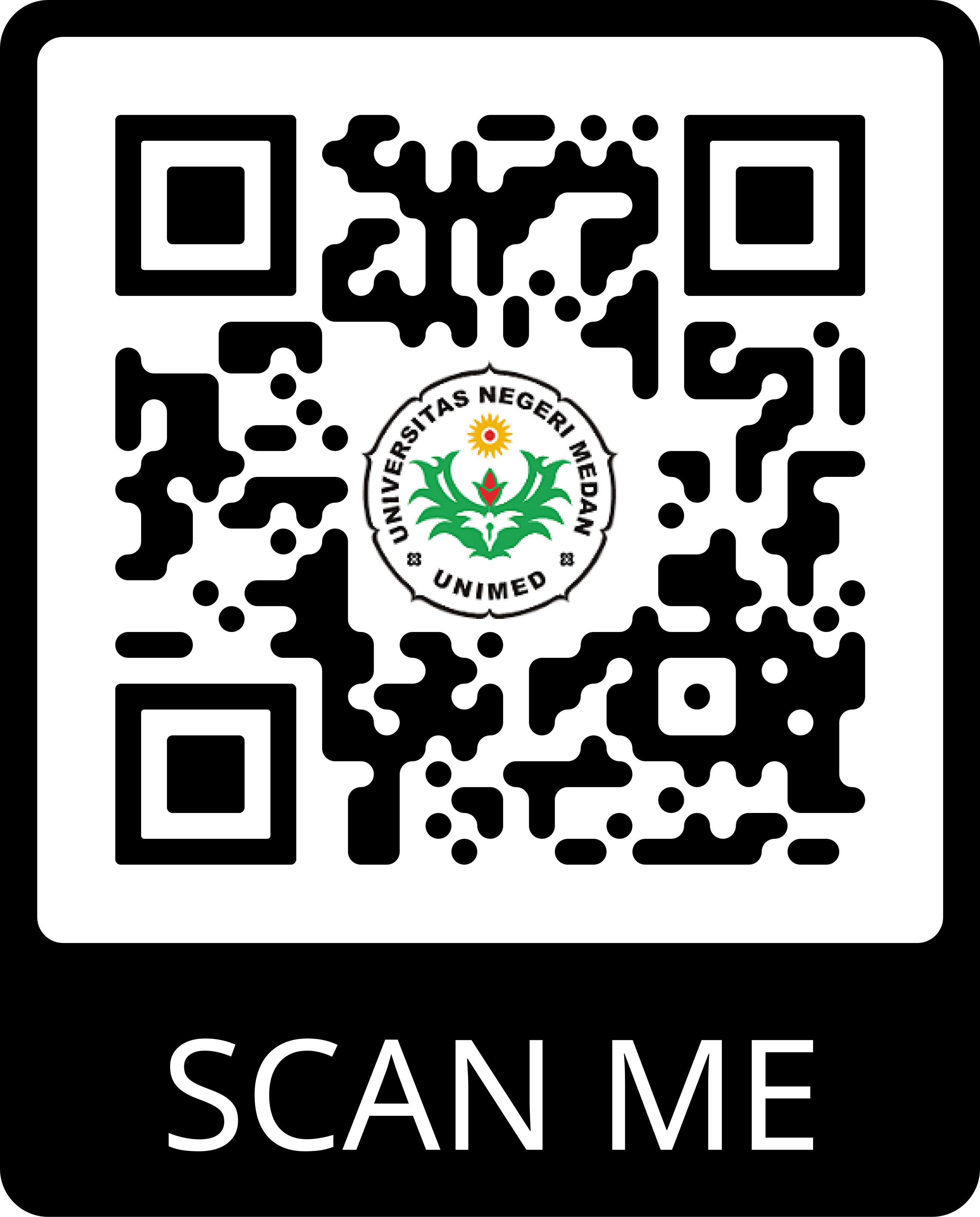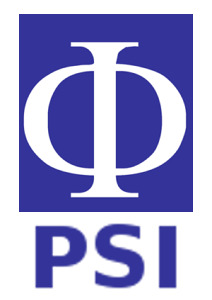
DEVELOPMENT ANALYSIS OF CREATIVE THINKING TEST INSTRUMENTS ON NATURAL SCIENCE MATERIALS
Abstract
Keywords
Full Text:
PDFReferences
Almuharomah, F. A., & Mayasari, T. (2019, December). Pengembangan Instrumen Tes Kemampuan Berpikir Kreatif Siswa SMP terintegrasi Kearifan Lokal. In SNPF (Seminar Nasional Pendidikan Fisika).
Amrina, Z., Desfitri, R., Zuzano, F., Wahyuni, Y., Hidayat, H., & Alfino, J. (2018). Developing instruments to measure students’ logical, critical, and creative thinking competences for Bung Hatta University Students. International Journal of Engineering and Technology (UAE), 7(4). https://doi.org/10.14419/ijet.v7i4.9.20633
Andriani, V. S. (2016). The Effectiveness of Inquiry Learning Method to Enhance Students’ Learning Outcome: A Theoritical and Empirical Review. Journal of Education and Practice, 7(3), 38 – 42.
Anggereini, E., Budiarti, R. S., & Sanjaya, M. E. (2018). The effect of ICT-based classwide peer tutoring (CWPT) application and motivation to biology education student creativity in ICT learning. BIODIK, 4(2), 105-113.
Arikunto, S. (2010). Prosedur Penelitian Suatu Pendekatan Praktik. Jakarta: Rineka Cipta.
Asma, A., Sabeen, Q., & Isabel, W. (2014). Investigating the washback effect of the Pakistani Intermediate English Examination. International Journal of English and Literature, 5(7), 149-154.
Astuti, P. (2017). Peningkatan Motivasi dan Kemampuan Berpikir Kreatif Siswa pada Materi Pencemaran Lingkungan melalui Media Fotonovela. Refleksi Edukatika: Jurnal Ilmiah Kependidikan, 8(1).
Brown, H. D. & Abeywickrama, P. (2010). Language assessment, principles and classroom practices(2nd ed). White Plains, NY: Pearson Education, Inc.
Dewi, P. R., Erna, M., & Rasmiwetti, R. (2020). The Development of Assessment Instruments with Problem Posing Methods to Measure Students Creative Thinking Ability in Acid Base Materials. Journal of Educational Sciences, 4(2). https://doi.org/10.31258/jes.4.2.p.334-346
Faresta, R. A., Anggara, W., Mandiri, T. A., & Septiawan, A. (2020). Pengembangan Instrumen Tes Kemampuan Berpikir Kreatif Berbasis Pendekatan Konflik Kognitif. Jurnal Pendidikan, Sains, Geologi, dan Geofisika (GeoScienceEd Journal), 1(2). https://doi.org/10.29303/goescienceedu.v1i2.55
Gajda, A., Karwowski, M., & Beghetto, R. A. (2017). Creativity and academic achievement: A meta-analysis. Journal of Educational Psychology, 109(2), 269. http://dx.doi.org/10.1037/edu0000133
Hammond, M. M., Neff, N. L., Farr, J. L., Schwall, A. R., & Zhao, X. (2011). Predictors of individual-level innovation at work: A meta-analysis. Psychology of Aesthetics, Creativity, and the Arts, 5(1), 90–105. https://doi.org/10.1037/a0018556
Huck, S. W. (2012). Reading Statistics and Research. Boston: Pearson Education Ltd.
Islami, F. N., Putri, G. D., & Nurdwiandari, P. (2018). Kemampuan Fluency, Flexibility, Orginality, Dan Self Confidence Siswa SMP. JPMI (Jurnal Pembelajaran Matematika Inovatif), 1(3), 249-258.
Kabeel, A. R., & Eisa, S. A.-M. (2016). The Correlation of Critical Thinking Disposition and Approaches to Learning among Baccalaureate Nursing Student. Journal of Education and Practice, 7(32), 91-103.
Lawshe, C. H. (1975). A quantitative approach to content validity. Personnel psychology, 28(4), 563-575.
Liberna, H., Nurfitriyanti, M., & Agustini, S. (2022). Kemandirian dan Kreativitas Belajar serta Pengaruhnya dalam Pemahaman Konsep Matematika. SAP (Susunan Artikel Pendidikan), 7(2), 307-315.
Long, H., Kerr, B. A., Emler, T. E., & Birdnow, M. (2022). A Critical Review of Assessments of Creativity in Education. Review of Research in Education, 46(1), 288-323.
Mardhiyana, D., & Sejati, E. O. W. (2016, February). Mengembangkan kemampuan berpikir kreatif dan rasa ingin tahu melalui model pembelajaran berbasis masalah. In PRISMA, Prosiding Seminar Nasional Matematika (pp. 672-688).
Maria, E., Rery, U., & Astuti, W. (2018). Peningkatan Kemampuan Berpikir Kritis Peserta Dididk pada Materi Termokimia di SMA Pekanbaru Melalui Penerapan Strategi Pembelajaran Process Oriented Guided Inquiry Learning (POGIL). Jurnal Riset Pendidikan Kimia, 8(1), 17-27.
McComas, W. F., & Nouri, N. (2016). The nature of science and the next generation science standards: Analysis and critique. Journal of Science Teacher Education, 27(5), 555–576. https://doi.org/10.1007/s10972-016-9474-3
Munandar, U. (2012). Pengembangan Kreativitas Anak Berbakat. Jakarta. Rineka Cipta.
Nurjan, S. (2018). PENGEMBANGAN BERPIKIR KREATIF. AL-ASASIYYA: Journal Of Basic Education, 3(1), 105. https://doi.org/10.24269/ajbe.v3i1.1302
Pradipta, I. D. B. P. E., Sariyasa, S., & Lasmawan, I. W. (2020). Pengembangan Instrumen Kemampuan Berpikir Kreatif dan Literasi Matematika Pada Materi Geometri Siswa Kelas IV Sekolah Dasar. Jurnal Penelitian dan Evaluasi Pendidikan Indonesia, 10(1), 21-30.
Radiah. (2020). Development of Biology Test of Creative Thinking-Torrance Test (Btct-Tt) Assessment to Improve Students’ Creative Thinking Skills. Jisae: Journal of Indonesian Student Assesment And Evaluation, 6(1). https://doi.org/10.21009/jisae.061.06
Rahayu, V. A., Haryani, S., & Dewi, S. H. (2019). Keefektifan Pengembangan Instrumen Tes Untuk Mengukur Kemampuan Berpikir Kreatif Siswa. School Science and Mathematics, 2(3).
Ratumanan, G. T. & Laurens. (2011). Evaluasi Hasil Belajar Tingkat Satuan Pendidikan. Surabaya: Unesa University Press.
Riduwan. (2013). Dasar-dasar Statistik. Bandung: Alfabeta.
Rizkiyah, F., Miarsyah, M., & Ristanto, R. H. (2021). PENGEMBANGAN TTCT-V (TORRANCE TEST OF CREATIVE THINKING VERBAL) BERBASIS LINGKUNGAN UNTUK TINGKAT SMA. Bio-Lectura: Jurnal Pendidikan Biologi, 8(1), 1-11. https://doi.org/10.31849/bl.v8i1.4534
Runco, M. A., & Jaeger, G. J. (2012). The standard definition of creativity. Creativity research journal, 24(1), 92-96. https://doi.org/10.1080/10400419.2012.650092
Sari, A. I. C., Rasam, F., & Karlina, E. (2022). Pengaruh Persepsi pada Kreativitas Guru dalam Penggunaan Media Belajar dan Iklim Sekolah terhadap Prestasi Belajar Peserta Didik Mata Pelajaran Ekonomi di SMK Swasta Jakarta Selatan. SAP (Susunan Artikel Pendidikan), 6(3).
Sani, R. A. (2019). Pembelajaran berbasis hots edisi revisi: higher order thinking skills (Vol. 1). Tira Smart.
Setyawan, R., Siswono, T. Y. E., & . W. (2020). Designing Assesment Task of Student Creative Thinking Assisted by Google Form. International Journal of Innovative Science and Research Technology, 5(7). https://doi.org/10.38124/ijisrt20jul507
Siburian, J., Corebima, A. D., Ibrohim, I., & Saptasari, M. (2019). Analisis Validitas Hasil Pengembangan Perangkat Pembelajaran Ilmu Pengetahuan Lingkungan Berstrategi Inkuiri dan Instrumen Tes Kemampuan Berpikir Kritis, Berpikir Kreatif dan Hasil Belajar Kognitif Mahasiswa. BIODIK, 5(1). https://doi.org/10.22437/bio.v5i1.6825
Taghva, F., Rezaei, N., Ghaderi, J., & Taghva, R. (2014). Studying the relationship between critical thinking skills and students’ educational achievement (Eghlid Universities as case study). International Letters of Social and Humanistic Sciences, 25, 18-25.
Tanjung, Y. I., & Dwiana, Y. A. (2019). Pengembangan Instrumen Tes Berbasis Critical Thinking Skill Pada Materi Gerak Lurus. INPAFI (Inovasi Pembelajaran Fisika), 7(4).
Tanjung, Y. I., & Bakar, A. (2019). Development of Physical Test Instruments Based on the Conceptual Knowledge Dimension of the Revision Bloom Taxonomy. Jurnal Pendidikan Fisika, 8(2), 141-148.
Tanjung, Y. I., & Nasution, I. R. (2022). The Development of Creative Thinking Test Instruments with Torrance Indicators on Direct Current Electricity Materials. Jurnal Pendidikan Fisika Indonesia, 18(2), 134-143.
Torrance, E. P. (1990). Torrance Tests of Creative Thinking. Beaconville: Scholastic Testing Services.
Trimawati, K., Kirana, T., & Raharjo, R. (2020). Pengembangan Instrumen Penilaian IPA Terpadu Dalam Pembelajaran Model Project Based Learning (PjBL) Untuk Meningkatkan Kemampuan Berpikir Kritis dan Kreatif Siswa SMP. Quantum: Jurnal Inovasi Pendidikan Sains, 11(1). https://doi.org/10.20527/quantum.v11i1.7606
Wijaya, E. Y., Sudjimat, D. A., & Nyoto, A. (2016). TRANSFORMASI PENDIDIKAN ABAD 21 SEBAGAI TUNTUTAN PENGEMBANGAN SUMBER DAYA MANUSIA DI ERA GLOBAL. 1.
Yulianti, E. L., & Alimah, S. (2021). Developing Learning Design Employing Problem Based Learning with Mind Mapping of Excretory System Material to Develop Critical and Creative Thinking Ability for Junior High School Students. Journal of Biology Education, 10(2), 145-153.
DOI: https://doi.org/10.24114/jpf.v12i1.43340
Article Metrics
Abstract view : 292 timesPDF - 322 times
Refbacks
- There are currently no refbacks.
Copyright (c) 2023 Yul Ifda Tanjung

This work is licensed under a Creative Commons Attribution 4.0 International License.
___________________________________________________________________________________________________________________________________________
Jurnal Pendidikan Fisika
p-ISSN : 2252-732X | e-ISSN : 2301-7651
Organized by The Magister of Physics Education Departement in State University of Medan in collaboration with Physical Society of Indonesia (PSI)
W: https://jurnal.unimed.ac.id/2012/index.php/jpf/index
E : jpfunimed@unimed.ac.id
rajo.hasim@gmail.com (principal contact)

_____________________________________________________________________________________________________________________________________________

This work is licensed under a Creative Commons Attribution 4.0 International License.





